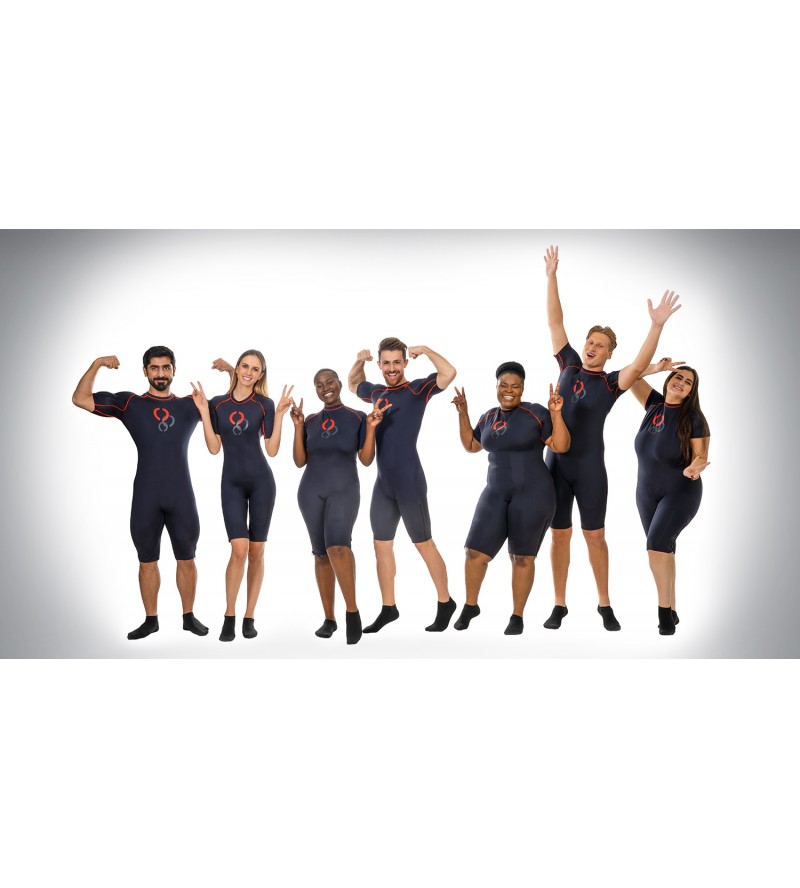Before the electrical signals reach your muscles and cause them to contract, the current first needs to overcome the resistance of your skin. The following principle applies here: The higher the frequency – i.e. the greater the number of impulses per second, measured in the unit herz – the easier this resistance is to overcome.
Many EMS systems use low-frequency (LF) impulses that are significantly lower than 1000 hertz (Hz). The skin resistance represents a significant barrier for this frequency, which means that the impulses do not penetrate as deep. This can result in an unpleasant effect in which the low-frequency impulses feel like little pinpricks while training.
In contrast, modern EMS training systems like myostyle use modulated medium-frequency (MF) currents that are significantly higher than 1000 Hz. These faster impulses penetrate more deeply into your musculature and have a much greater effect. This leads to something referred to as the “volume effect”, which enables higher and more intense levels of stimulation. This results in stronger muscle contractions and better effects from training. At the same time, the higher frequencies generally make the training experience feel much more pleasant.
All of the advantages of modulated medium-frequency current at a glance
- Highly effective muscle activation
- Simultaneous tissue activation: cell metabolism is stimulated
- Volume effect: all tissue structures are targeted
- Depth effect: signal integrity is retained deep into the musculature

